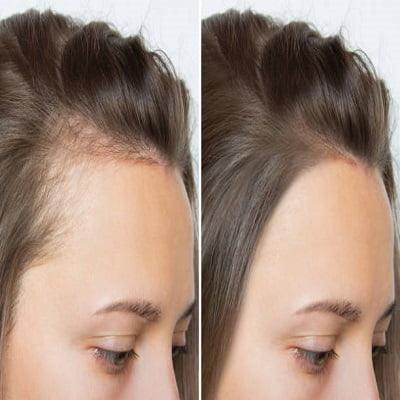Your professional life and personal life are impacted by how your hair looks. You may differentiate yourself from others by more than just what you wear. Hair loss significantly lowers a person’s sense of self-worth. How you look and your confidence in yourself affect how others perceive you. Your confidence will help you appear more professional at work and more at ease in social settings. Seeing changes in your hair as you age is common, especially when you get closer to your 50s. Like every other body part, our hair undergoes various modifications as we age. One of the various hair treatments for hair loss is hair filler. Filler has revolutionized the beauty and hair care industries because of its many positive impacts, including long-lasting results and therapeutic and esthetic benefits. In this blog, we’ll explore the Pros & Cons of Hair Fillers: what you need to know!
How Are Hair Fillers Applied?
Our bodies generate less collagen and elastin as we age. They are in charge of reversing the aging process of our skin cells and constructing the frameworks that keep our skin taut and elevated. Our skin begins to sag as we age due to the less production of collagen and elasticity, and spots from years of sun exposure or bad habits like smoking show up. Hyaluronic acid is the usual ingredient in dermal fillers (HA). By injecting dermal fillers, we can smooth wrinkles, sculpt our features, and give our faces back some volume.
Pros & Cons of Hair Fillers
To determine the best course for treating hair loss or thinning, people thinking about hair fillers must carefully analyze each option’s advantages and disadvantages while considering their unique needs, preferences, and expectations. Seeking advice from a licensed healthcare practitioner can offer tailored recommendations based on unique situations.
Pros of Hair Fillers
- Instant Volume: Hair fillers give the appearance of thicker, fuller hair by instantly adding volume to thin or scant regions.
- Non-Invasive: Unlike surgical hair restoration techniques, hair fillers involve injections or topical applications without requiring surgery.
- Fast Process: Because hair filler procedures are usually quick, patients can do them in a brief office visit.
- Minimal to No Downtime: Hair filler treatments have little to no downtime, so patients can return to normal activities immediately.
- Temporary Outcomes: Hair fillers provide outcomes that might endure for a few weeks or months, giving those who might not desire a permanent alteration flexibility in their treatment plan.
Cons of Hair Fillers
- Transient Nature: Because hair fillers are transient, maintaining the desired results over time will take multiple procedures.
- Cost: Regular hair filler treatments can be costly, especially if numerous sessions are required, even if they are less expensive than certain surgical solutions.
- Risk of Side Effects: There is a chance of experiencing side effects, including inflammation, redness, or allergic reactions at the injection site, just like with any cosmetic surgery.
- Limited Coverage: People with substantial balding or thinning hair or seeking a more permanent treatment may find better choices than hair fillers.
- Not a Long-Term Fix: Hair fillers do not offer a long-term fix for hair loss. People seeking permanent outcomes might have to consider non-traditional therapies like hair transplantation.
What You Need to Know About Hair Fillers
Here are some important factors to consider before getting hair fillers so you can make an informed choice. Hair fillers are temporary treatments for hair loss or thinning, but they may not be suitable for severe cases. Consultation with a professional is recommended to assess your condition and expectations. Consider your natural hair type and thickness, as hair fillers can enhance volume.
However, potential side effects like redness, inflammation, or allergic reactions may occur. A treatment plan should be created with your physician, considering cost, maintenance requirements, realistic expectations, provider reputation, and options like topical therapies, oral drugs, or surgical procedures. Everyone needs to consult a medical expert to customize the treatment for their specific needs.
Conclusion
Hair filler treatments are useful for adding thickness and volume to hair but are not a long-term solution for underlying hair loss problems. Factors like hair thickness, side effects, cost, and care needs should be considered. Consultation with a reliable provider and researching different treatments help make informed choices. The success of hair filler treatments depends on skilled practitioners and knowledgeable individuals. Prioritizing education, honest communication, and understanding the technique’s limitations can improve overall well-being.






Leave a Reply